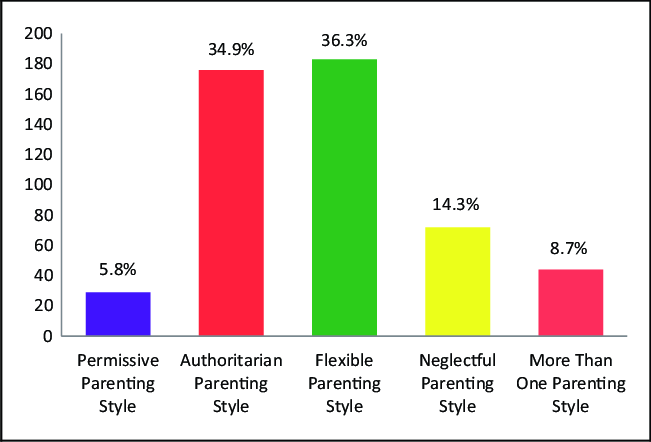
Navigating the arena of parenting can on occasion feel like venturing via a maze, particularly for brand new mother and father keen to provide the high-quality upbringing for his or her kids. Enter the Parenting Style Repartition Graph—a tool designed to demystify the complex landscape of parenting styles. In this weblog, we will explore what this graph is all approximately, how it categorizes different parenting styles, and why knowledge those patterns is important for shaping your parenting technique.
What is the Parenting Style Repartition Graph?
The Parenting Style Repartition Graph is a visible illustration that helps mother and father apprehend and categorize distinct methods to parenting. This graph serves as a manual, depicting the four main parenting patterns and the way they distribute throughout the parenting spectrum. It’s now not only a tool for class; it’s a replicate that reflects how sure behaviors and attitudes form a infant’s improvement.
Purpose and Use
The number one purpose of this graph is to simplify the complexities of parenting into distinct classes. By doing so, it allows parents to assess their own parenting methods, recognize patterns, and make informed adjustments if necessary. The graph is divided into quadrants, each representing a completely unique fashion of parenting. This based review gives a direction for dad and mom to become aware of their dominant style, selling self-consciousness and boom of their parenting journey.
Categorizing Parenting Styles
Parenting patterns are normally categorized into 4 principal kinds—Authoritative, Authoritarian, Permissive, and Uninvolved. Each quadrant of the graph corresponds to this type of patterns, providing a framework for parents to evaluate and understand their practices. This categorization isn’t meant to field all people right into a single fashion however to provide insights into the strengths and potential pitfalls of every technique.
Understanding the Four Main Parenting Styles
Understanding those four parenting patterns is fundamental to using the repartition graph efficiently. Each style comes with wonderful traits and implications for baby development. Let’s break down each one in element.
Authoritative Parenting
Authoritative dad and mom stability firmness with warm temperature. They set clean expectancies and put into effect guidelines with expertise and aid. This style fosters independence and confidence in kids, emphasizing open communique. For example, an authoritative figure might set a bedtime however provide an explanation for the importance of rest, permitting the kid to apprehend the reasoning in the back of the rule of thumb.
Authoritarian Parenting
In contrast, authoritarian parenting specializes in strict discipline and manage, frequently with little room for communicate. These parents fee obedience and regularly resort to punitive measures to enforce policies. While this fashion can result in nicely-behaved youngsters, it may additionally suppress creativity and lead to loss of self-esteem. An instance is probably insisting on a rule without clarification, awaiting immediately compliance.
Permissive Parenting
Permissive mother and father are lenient, regularly performing more like buddies than authority figures. They permit considerable freedom and infrequently implement consistent rules. While this could create a nurturing environment, it is able to also cause behavioral issues due to lack of boundaries. A permissive discern might allow prolonged display screen time without setting limits or effects.
Uninvolved Parenting
Uninvolved mother and father offer little steerage or interest. They meet primary needs but are normally indifferent from their infant’s life. This fashion can result in emotions of forget about and insecurity in kids. An uninvolved discern might be too absorbed of their very own sports, leaving kids to make decisions independently without steering or assist.
How the Graph Helps New Parents
For new mother and father, the Parenting Style Repartition Graph may be a useful device. It offers a image of in which their dispositions might lie, supporting them discover their primary parenting fashion. This cognizance is the first step towards nurturing a flexible and adaptive approach to parenting.
Identifying Your Style
The graph encourages mother and father to mirror on their interactions with their youngsters. Are you more authoritative, balancing rules with empathy? Or do you lean closer to being permissive, valuing freedom above structure? Identifying those inclinations allows you to pinpoint areas for development and increase, making sure your infant gets balanced steerage.
Flexibility and Adaptation
While the graph presents a start line, the important thing to effective parenting is flexibility. No unmarried style is best, and instances frequently require model. The graph facilitates parents see the large image, encouraging them to mix factors from extraordinary styles as wanted. This adaptability is critical, because it lets in parents to respond to their child’s evolving wishes.
The Role of Parenting Experts
Parenting experts play a essential role in deciphering the Parenting Style Repartition Graph. Their insights help dad and mom observe the graph’s findings in practical, significant approaches. Here are some professional suggestions on leveraging the graph to beautify your parenting skills.
Practical Applications
Experts advocate the usage of the graph as a device for self-mirrored image and boom. They advocate regular test-ins with the graph to monitor adjustments in parenting fashion over the years. This exercise ensures that mother and father continue to be privy to their method, letting them modify as their toddler grows and develops.
Enhancing Parenting
By consulting with parenting specialists, mother and father can gain deeper insights into their patterns and their impact on children. Experts can provide customized advice, supporting mother and father balance different elements of the graph to create a nurturing and powerful parenting strategy. This steering can cause improved relationships and more confident, nicely-adjusted children.
Real-Life Examples
To higher understand the application of the Parenting Style Repartition Graph, permit’s explore some real-life eventualities. These examples spotlight the diversity of parenting patterns and the way they can evolve through the years.
Case Study One
Consider Sarah, a brand new mom who first of all leaned in the direction of permissive parenting. After consulting the graph and seeking professional advice, she identified the want for extra shape. By introducing clean guidelines and preserving open verbal exchange, she transitioned in the direction of a greater authoritative fashion, ensuing in a happier, greater balanced family.
Case Study Two
John, an authoritarian parent, observed his youngsters had been withdrawn and worrying. Using the graph, he found out the want for greater warm temperature and know-how in his approach. With steering from parenting professionals, he regularly followed a greater authoritative style, fostering a positive and supportive surroundings at domestic.
Case Study Three
Emily, an uninvolved figure, determined the effect of her detachment on her toddler’s development. By the usage of the graph to discover her style, she sought aid to emerge as extra engaged and present. This shift advanced her relationship along with her child, developing a extra nurturing and loving domestic environment.
Conclusion
Understanding your parenting fashion is a crucial step in fostering a wholesome, supportive environment on your children. The Parenting Style Repartition Graph offers a treasured framework for identifying and refining your method. Remember, no single fashion fits all conditions. The key lies in flexibility and a willingness to evolve as your infant grows and their needs exchange.
By exploring this graph, consulting with parenting professionals, and reflecting on actual-lifestyles examples, you may gain the insights needed to enhance your parenting capabilities. If you’re interested in developing your own Parenting Style Repartition Graph, or would really like similarly steering, remember achieving out to a parenting train or specialist.
Parenting is a lifelong journey, full of demanding situations and rewards. By expertise your style and remaining open to trade, you could navigate this course with self assurance, ensuring the first-class possible results in your youngsters.

